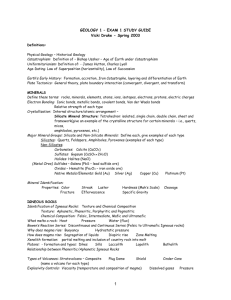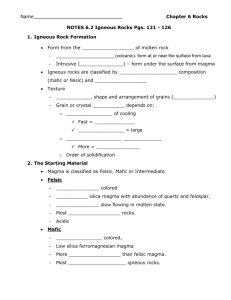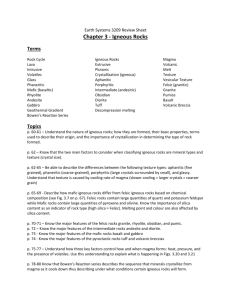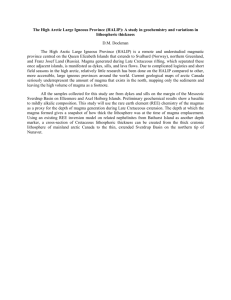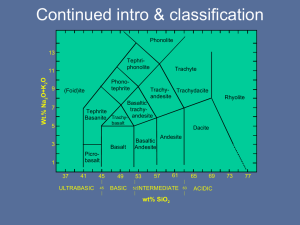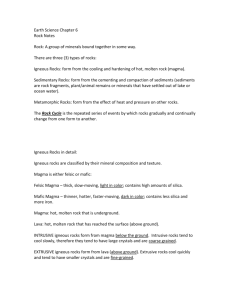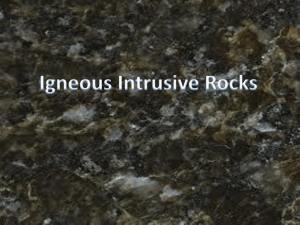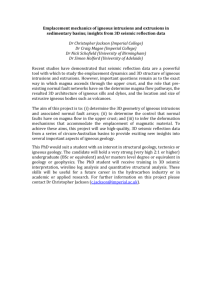Geo Intrusive Igneous rocks video
advertisement
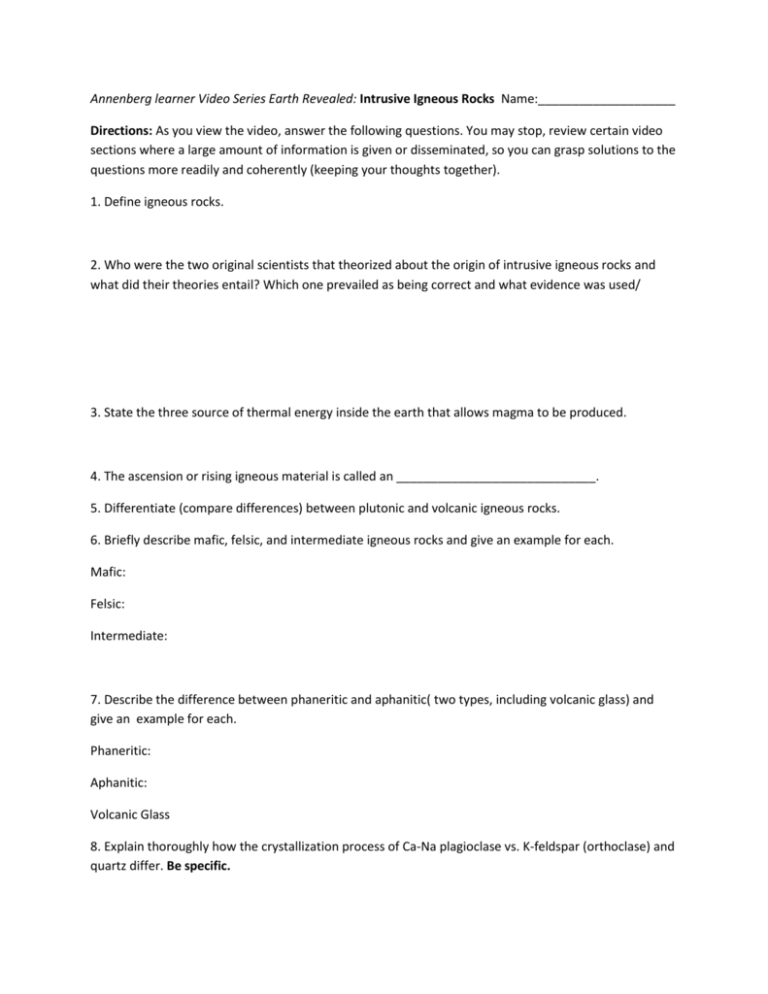
Annenberg learner Video Series Earth Revealed: Intrusive Igneous Rocks Name:____________________ Directions: As you view the video, answer the following questions. You may stop, review certain video sections where a large amount of information is given or disseminated, so you can grasp solutions to the questions more readily and coherently (keeping your thoughts together). 1. Define igneous rocks. 2. Who were the two original scientists that theorized about the origin of intrusive igneous rocks and what did their theories entail? Which one prevailed as being correct and what evidence was used/ 3. State the three source of thermal energy inside the earth that allows magma to be produced. 4. The ascension or rising igneous material is called an _____________________________. 5. Differentiate (compare differences) between plutonic and volcanic igneous rocks. 6. Briefly describe mafic, felsic, and intermediate igneous rocks and give an example for each. Mafic: Felsic: Intermediate: 7. Describe the difference between phaneritic and aphanitic( two types, including volcanic glass) and give an example for each. Phaneritic: Aphanitic: Volcanic Glass 8. Explain thoroughly how the crystallization process of Ca-Na plagioclase vs. K-feldspar (orthoclase) and quartz differ. Be specific. *Important #9 9. Who was Norman Bowen? Show his Bowen reaction series below from the continuous and discontinuous series of how magma goes through differentiation by a temperature change or gradient showing the minerals and the relative melting points/freezing points that allow them to crystallize out of solution of magma along that temperature gradient. Write down the type of silicate a mineral is in parentheses after its name (3-D network, single or double tetrahedron chain, isolated tetrahedral, sheet silicates). Why do you think they are called continuous or discontinuous series in their respective series of changes? 10. Increasing the water content of magma is like adding a flux to the melt. What does it due to the melting point of the magma? 11. Draw out an example how magmatic differentiation can occur in an intrusion from mafic magma to felsic magma. How do you think temperature plays into this differentiation process in this situation? 12. What types of igneous rocks form at subduction zones (convergent boundaries involving oceanic and continental crust)? At ridges or divergent boundaries? What lowers the m.p. of the magma? 13. In a subduction zone, an assimilation of magma can occur. Explain 14. At a convergent plate boundary, __________________(rock type) is commonly found. 15. Why does magma rise in aDivergent plate boundary? Convergent plate boundary? (2 ways) 16. Give a specific fact and descrition about the following types of igneous intrusions: a) dikes b) sills c) laccoltih d) plutons -stocks -batholths 17. The intermediate igneous rock andesite got its name from the ____________ mountains the occur along the world’s largest subduction zone. 18. Circle the correct words in the parentheses or fill in the blank. The extrusive ultramafic rocks (diorite, komatiite, andesite, obsidian, gabbro, anorthite Ca-plagioclase” , peridotite, rhyolite) are rare and are only found in ___________ crust. This might mean at this time, the upper___________ and the ____________________chemistry of Earth was different, because of their rarity of being found today. The moon crust is mostly made up of the extrusive ultramafic rock (diorite, komatiite, andesite, obsidian, gabbro, anorthite Ca-plagioclase” , peridotite, rhyolite) leading scientist to the inference that the Earth and Moon had similar geochemistry and dynamics occurring at this time.
